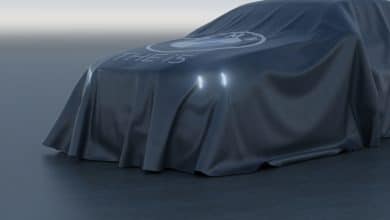Zeekr M-Vision Concept: the robotic taxi

The idea of autonomous “pods”, these driverless rolling cells, has been around for years if not decades. However, with the Zeekr M-Visionwe are closer to the goal than ever before.
For a few months already, some European publications have listed Zeekr vehicles being tested in the northern regions of Sweden. Designed to be driverless shared transport vehicles, we now discover the concept version of the M-Vision which will be very close to production.

The overall look is very good-natured with candy tunes a bit like Volkswagen’s ID Buzz. Moreover, the silhouette of the two products is very similar. At the front, the lines are pure and simple with a large black applique that incorporates both the windscreen and the headlights. The principle is the same at the rear. It is in profile that singular elements appear, with the unstructured shape of the fenestration belt, in particular. The design of the four-spoke rims, however, is reminiscent of the wheels of the MINI Cooper S E.
Access is very simple. As you approach, the handle lights up and unfolds from the door. The two sliding panels allow a large opening. In the cabin, no need to look for a cockpit. Rather, the result is large unobstructed surfaces for the comfort of the occupants. The dashboard serves as a storage space for storing objects such as bags or panniers. The front seats can be turned backwards to create a living room type space where the five occupants can travel in complete peace of mind. Zeekr maintains that transport is not limited from point a to point b. The M-Vision cabin can easily be converted into a work area with its shelves and the possibility of screens.

On a technical level, the details are quite limited at the moment. The manufacturer has confirmed that the platform is the SEA-M for Sustainable Experience Architecture. This is a foundation found in other divisions of the Chinese Geely, the owner of Zeekr. The M version of this platform is dedicated to autonomous driving vehicles such as robotaxis, commercial vans and logistics and emergency transport vehicles. So there are no targets for the general public. With the base, Mr. Zeekr maintains that the wheelbase will be able to go from 2,700 to 3,300 millimetres.
When it comes to mechanics, not a single word. Traction, propulsion, integral, the information is not known. However, we know that the motorization will be electric. The manufacturer maintains that the M-Visions are designed to run up to 16 hours a day and do some 500,000 kilometers in five years. Obviously, we will have to see concrete and real results over the next few years. Moreover, the Chinese company specializing in autonomous driving technology Waymo is participating in the development and is particularly targeting California for the implementation of a fleet of driverless vehicles over the next few months or years.












